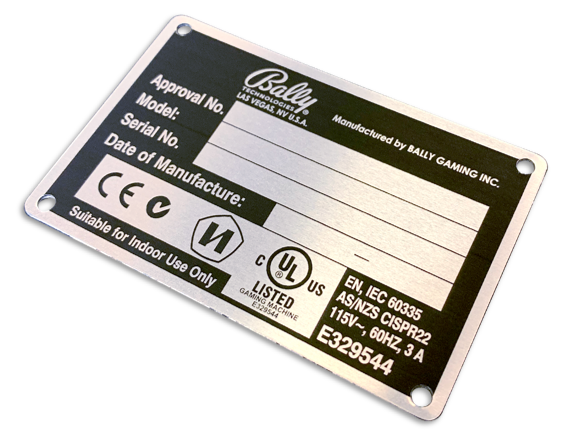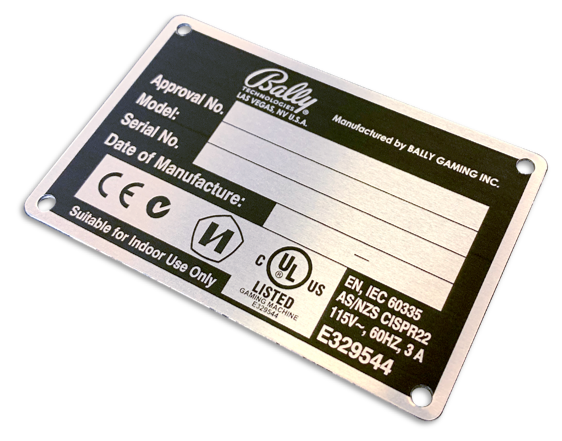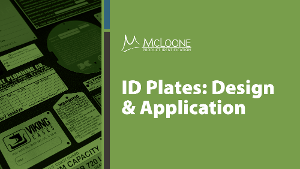You see metal ID plates every day and likely pay little attention until you need the information they provide. ID plates communicate critical details for safe operating and maintenance of equipment. They also provide information on regulatory information to assure consumers that the product is compliant.
 Industries Using ID Plates
Industries Using ID Plates
Manufacturers require equipment marked for proper use and maintenance. Construction equipment, pumps, meters, and tools need to show relevant specs and tolerances. ID plates provide information for voltage, pressure, and temperature ratings. These types of marking on equipment and communication is used by Industries across the globe, including:
-
Manufacturing
-
Electronics
-
Utilities
-
Transportation
-
Oil and Gas
Material Options for ID Plates
A variety of metal and flexible material options is stocked to provide the right protection along with the functionality, durability, and custom decoration needed for effective labeling of your industrial equipment.
Metal data plates are ideal for equipment installed in harsh environments, near heat, or those exposed to vibration and grease such as metal valve plates or pump tags in boiler rooms. Industrial labels made from flexible material are ideal for applications that need to showcase serial or model numbers, electrical rating specs, load rating or date of manufacture on a variety of equipment.
Material |
Thickness and Finish |
|
Aluminum
|
.002" Matte and Bright Foil .012"-.032" Mill Finish and Bright .012"-.063" Anodized .062"-.090" Mill Finish |
|
Stainless Steel
|
.018"-.036" Brushed |
|
Polycarbonate
|
.005"-.030" Clear, Velvet, Weatherable |
|
Polyester
|
.002" White, Clear, Matte Silver, Brushed Silver, Bright Silver, Imprintable, Reflective .005"-.010" Clear |
|
Vinyl
|
.002"-.004" Standard .007" Static Cling .010"-.065" Rigid |
Durable Graphics for ID Plates
Many industrial environments have equipment that is exposed to chemicals, weather extremes, heavy handling, and dirt. Choosing the right processing and materials for ID plates minimizes the risk of critical information not being visible or the data plate wearing away. Industrial ID Plates have strict regulations for the type of information that should be featured, set by OSHA, NFPA, and other organizations. This information needs to be legible, durably marked, and plainly visible after the equipment is installed.
Anodizing, protective topcoats, and high temperature inks are some of the durable solutions. Each stands up to indoor and outdoor environments, ensuring data plates last the lifetime of the product. All processes follow strict compliance guidelines to ensure quality and industry standards are met.
How Can We Help?
Companies around the world use industrial data plates to communicate critical information to consumers and equipment operators. Determining the application and type of information for your ID plates takes communication. McLoone offers cost effective solutions to make sure your equipment displays the right message.
Related Posts
Metal Material Options for Nameplates and ID Plates
How ID Plates Help Communication
6 Tips to Simplify Your ID Plate Design [Infographic]
5 Reasons Metal is the Material of Choice for ID Plates



